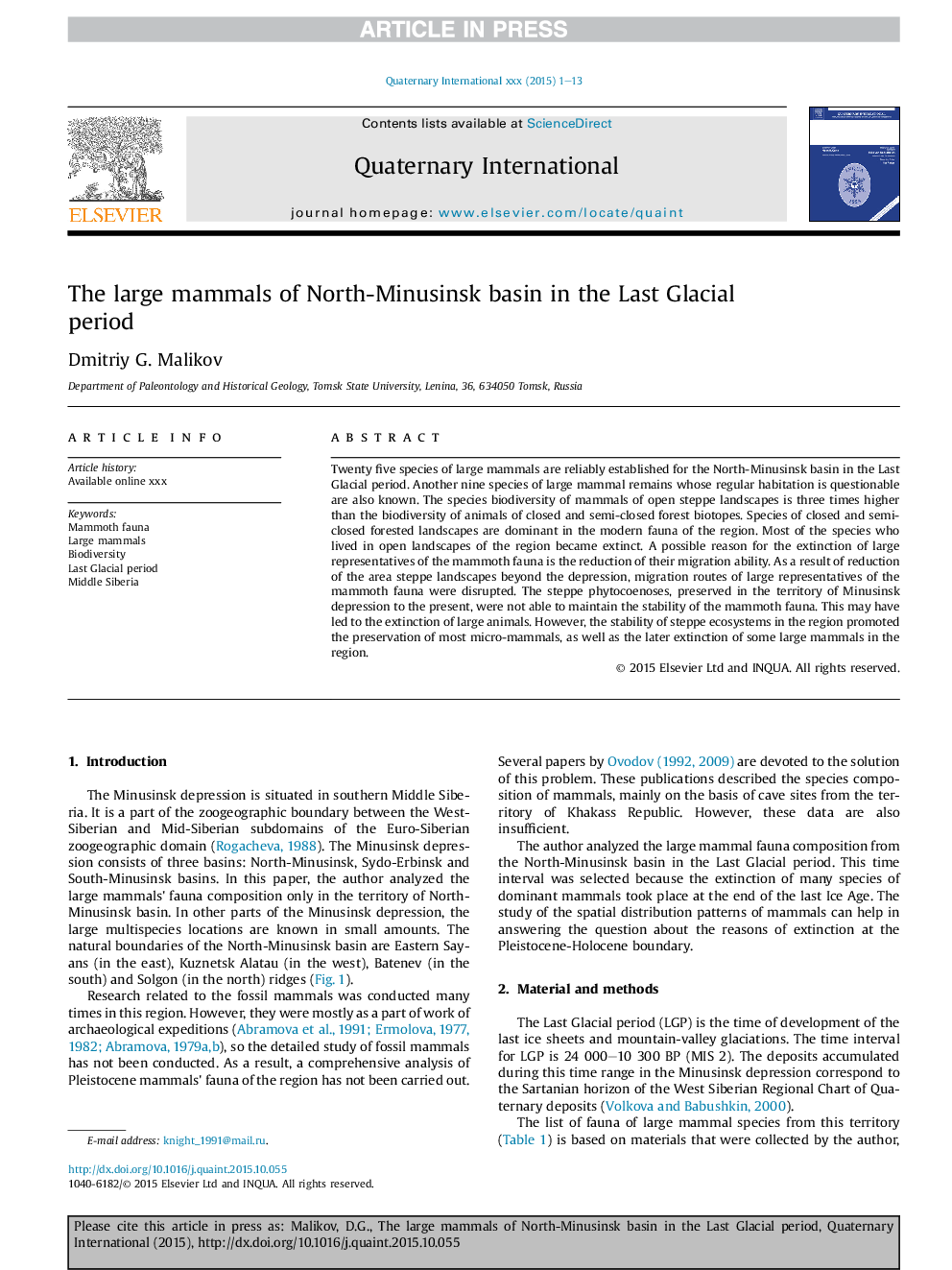| Article ID | Journal | Published Year | Pages | File Type |
|---|---|---|---|---|
| 5113963 | Quaternary International | 2016 | 13 Pages |
Abstract
Twenty five species of large mammals are reliably established for the North-Minusinsk basin in the Last Glacial period. Another nine species of large mammal remains whose regular habitation is questionable are also known. The species biodiversity of mammals of open steppe landscapes is three times higher than the biodiversity of animals of closed and semi-closed forest biotopes. Species of closed and semi-closed forested landscapes are dominant in the modern fauna of the region. Most of the species who lived in open landscapes of the region became extinct. A possible reason for the extinction of large representatives of the mammoth fauna is the reduction of their migration ability. As a result of reduction of the area steppe landscapes beyond the depression, migration routes of large representatives of the mammoth fauna were disrupted. The steppe phytocoenoses, preserved in the territory of Minusinsk depression to the present, were not able to maintain the stability of the mammoth fauna. This may have led to the extinction of large animals. However, the stability of steppe ecosystems in the region promoted the preservation of most micro-mammals, as well as the later extinction of some large mammals in the region.
Related Topics
Physical Sciences and Engineering
Earth and Planetary Sciences
Geology
Authors
Dmitriy G. Malikov,
